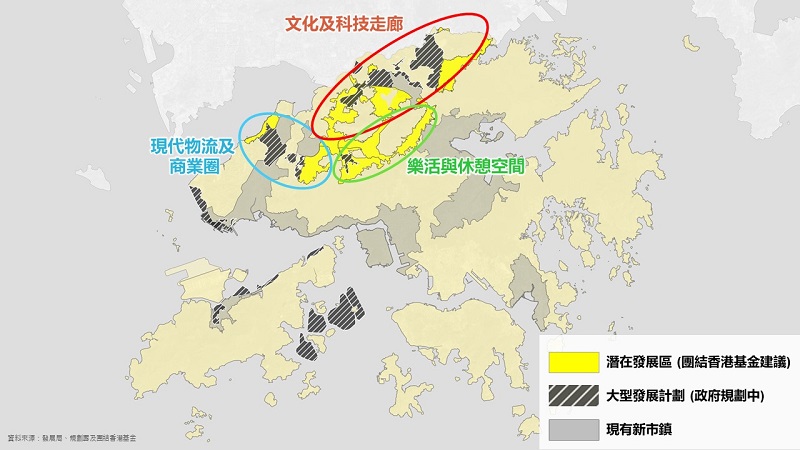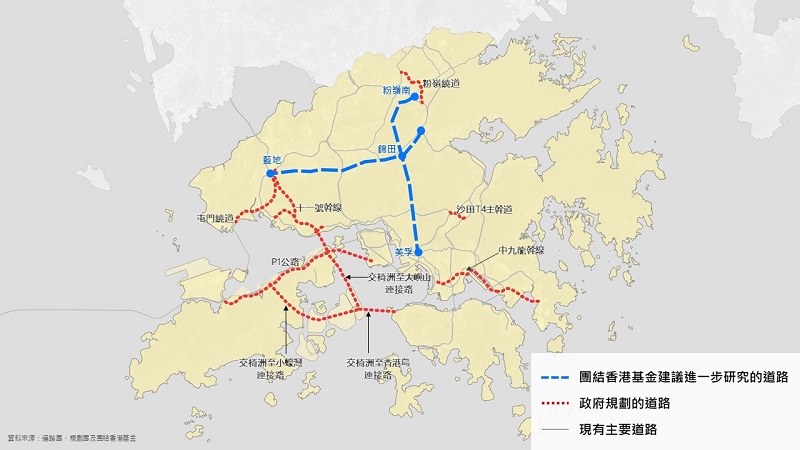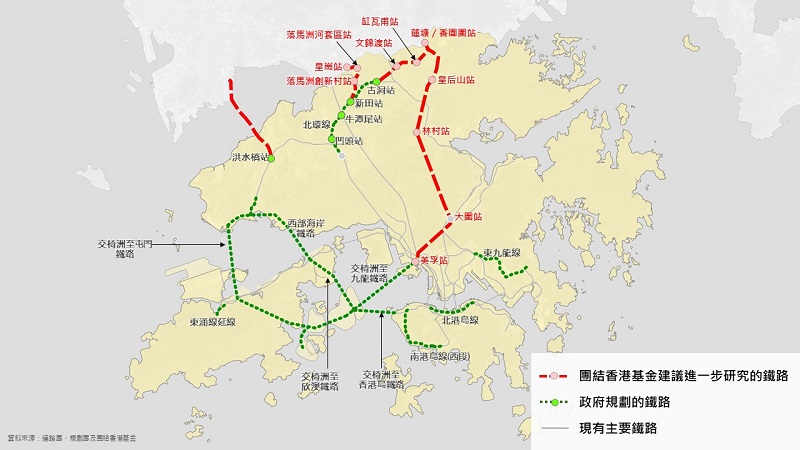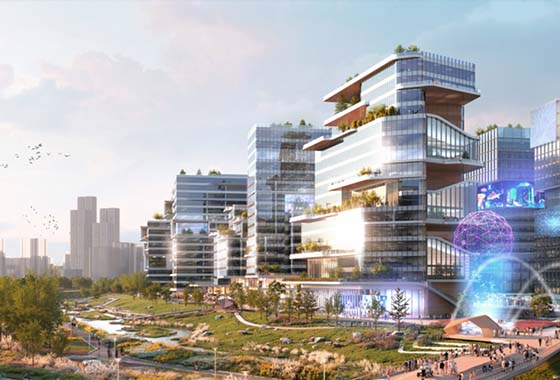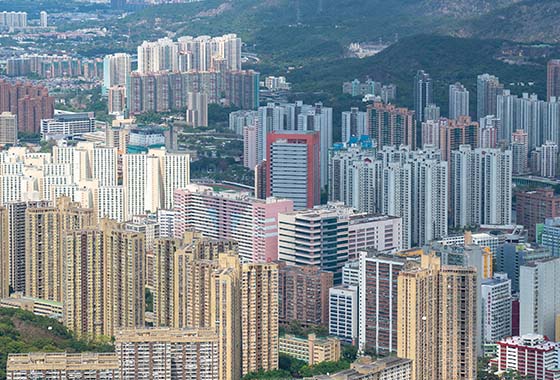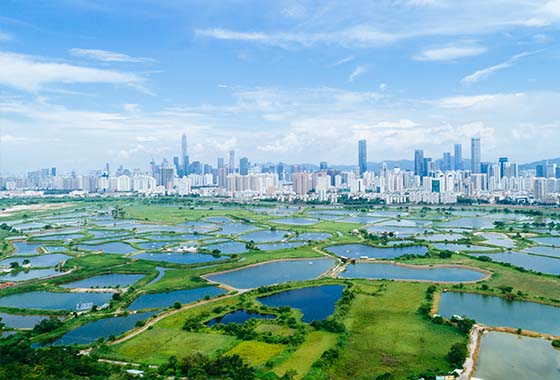OHKF Releases Land and Housing Policy Research Report
Building a Global City of the Future—
Envisioning Sustainable Urbanisation of the New Territories
(8 July 2021, Hong Kong) Our Hong Kong Foundation (OHKF) releases a new research report advocating large-scale urbanisation of the New Territories (NT). The Report, entitled Building a Global City of the Future—Envisioning Sustainable Urbanisation of the New Territories, advocates linking the Government’s planned developments in the NT with the OHKF’s nine proposed Potential Development Areas with infrastructures. The proposal forms a massive belt under three development themes: “Culture & Technology Corridor”, “Modern Logistics & Business Circle”, and “Living & Recreation Space”.
OHKF’s position is that Hong Kong needs holistic thinking and strategic vision in mapping out our land and housing development plans. Once we lift our "Central Business District perspective" to the "Greater Bay Area regional perspective", we will find that the New Territories is not a mere outer zone of our metropolis but our strategic hinterland that extends our competitive edge. It strengthens Hong Kong's connection with the global market and integration with the Greater Bay Area, enabling Hong Kong to further Mainland's international and domestic dual circulation and consolidating our position as an international hub.
The Report notes that by leveraging on the strategic advantages of the Greater Bay Area, such a holistic development plan will unleash the full potential of the New Territories, strengthen Hong Kong’s international hub status, and create a truly liveable city for Hong Kong people.
Substantial Increase in Urbanisation Rate—Development Blueprint for a Liveable New Territories
The Report forecasts that Hong Kong will need at least 9,000 hectares of land in the next three decades. However, even if the Lantau Tomorrow Vision and the two ongoing New Development Areas, namely Hung Shui Kiu and Kwu Tung North / Fanling North, are implemented on schedule, the Government’s current plan can create at most 5,000 hectares of land only.
A multi-pronged approach must be adopted to build up land reserves. The Report recommends that the Government expands the scale of the Lantau Tomorrow Vision from 1,700 hectare to 2,200 hectares of reclaimed land. Moreover, the Government should create an artificial island south of Cheung Chau for relocating the Kwai Tsing Container Terminals, and speed up the urbanisation of the New Territories.
The Report points out that at present, Hong Kong’s urbanised area with well-planned usages consists of only 20% of its total landmass, which is remarkably low compared with other cities or regions, such as 47% in Shenzhen and 73% in Singapore. The OHKF believes the Government should devise a holistic and thorough plan to speed up the pace of urbanising Hong Kong and develop more well-planned New Development Areas.
Meanwhile, the OHKF urges the Government to capture the synergy between the Lantau Tomorrow Vision and the development of the New Territories. As the Lantau Tomorrow Vision will connect the transportation networks of the New Territories and the Hong Kong Island, the development potential of the New Territories will be fully unleashed.
Connect Potential Development Areas under Three Development Themes
The Report presents nine Potential Development Areas, including four areas that are extended from existing new towns and planned New Development Areas: Hung Shui Kiu extension, Kam Tin South extension, Kwu Tung North extension, and New Territories North extension. Moreover, five new Potential Development Areas are proposed, including Yuen Long South-east, Northern Link, Kwu Tung South & Fanling South, Kam Tin North, and Lam Tsuen.
The OHKF estimates that the planned New Development Areas and the nine proposed Potential Development Areas can provide over 3,000 hectares of land. Through new infrastructures, these areas can be connected and categorised into three development themes (Figure 1).
(1) Culture & Technology Corridor
We recommend building the Corridor in the New Territories North. As mentioned in the Report, the Government has already reserved land in the Lok Ma Chau Loop, Kwu Tung North, and Heung Yuen Wai New Development Areas for building sci-tech research institutes and industrial estates. Meanwhile, the Shenzhen/Hong Kong Innovation and Technology Co-operation Zone will be set up in the Huanggang and Futian districts. The OHKF calls on the Government to grasp the development opportunities of Hong Kong-Shenzhen collaboration, establishing New Territories North as an anchorage of innovative enterprises and academic institutions. Moreover, the New Territories North can be transformed into an innovative and vibrant community backed by the Government’s arts policy and the cultural conservation spots of Chung Ying Street and Lung Yeuk Tau.
(2) Modern Logistics & Business Circle
We propose establishing the Circle in the North-west New Territories. Adjacent to Qianhai, Shenzhen, Hung Shui Kiu is planned as a regional economic and civic hub for the North-west New Territories. The OHKF advocates that the Government extends the developable area of Hung Shui Kiu and develops Yuen Long South-east, transforming the North-west New Territories into a regional hub for modern logistics and business.
(3) Living & Recreation Space
As the Government has already planned large-scale housing developments in Kam Sheung Road Station of the Tuen Ma Line, we propose to further develop Kam Tin South and Lam Tsuen in the Central New Territories, providing expansion space for future housing developments and fostering a quality living area.
Overcoming Challenges with a Reformed Policy Mindset
While in the past new towns saw their first population intake within 7.5 years from initial planning on average, it takes approximately 17 years for the recent New Development Area projects to do the same. The Report identifies three major hurdles in urbanising the New Territories, namely the under-provision of infrastructure, difficulties in aligning stakeholders’ interests, and inefficient administrative processes. These need to be tackled to expedite the urbansiation progress.
(1) Speeding Up Infrastructure to Unleash the Development Potential of the New Territories
The Report advocates expediting planned transport infrastructure projects to enhance the overall connectivity of the New Territories ahead of the current schedules, in particular the new strategic transport network under the Lantau Tomorrow Vision.
On road transport, the OHKF recommends building a new North-South Corridor and East-West Corridor respectively to relieve the vertical congestion of the North-east New Territories and to provide horizontal connection with the major New Development Areas and cross-boundary control points (Figure 2).
On railway, we recommend constructing a new North-South Line that links the Liantang Port/Heung Yuen Wai Boundary Control Point with the proposed railway network of the Lantau Tomorrow Vision. Moreover, the OHKF suggests extending the Northern Link to connect the Liantang Port/Heung Yuen Wai Boundary Control Point on the east and the Huanggang Port on the north. In addition, we propose constructing cross-boundary railway at the Hung Shui Kiu station to connect with Shenzhen (Figure 3).
(2) Upholding Stakeholders’ Interests and Leveraging Market Forces
To minimise the resistance of brownfield operators, squatter residents, and farmers towards development plans, the Government should provide specific and targeted resettlement and compensation arrangements for each of the identified groups. Moreover, policies should be provided to support the upgrading and restructuring of the relevant party to encourage voluntary relocation, leading to a win-win situation.
In addition, the Government should leverage market forces and adopt proper mechanisms and incentives. For example, land bonds issued by the Government can incentivise owners to hand over their idle lands. Also, the Land Readjustment mechanism widely used internationally can promote the public-private partnership model.
(3) Cutting Red Tape to Improve Administrative Efficiency
Currently, large-scale land developments have to go through cumbersome administrative processes. The Report recommends that the Government proactively reviews the existing public consultations, environmental impact assessments, and town planning procedures, with a view to streamlining the organisational structure of the Government and compressing the timeline of land developments.
To prevent the lack of cross-departmental coordination, we propose the Government to refer to the former Territory Development Department and establish a dedicated department to spearhead the development of New Development Areas. We also urge the Government to strengthen supervision on land creation by enacting an outcome-based management approach and setting clear performance indicators and accountability system.
Catching Up Cumulative Shortfall by Shortening Development Cycles
Apart from building up land reserves to meet long-term needs, the Foundation calls on the Government to recognise the current housing crisis. We forecast that the number of public and private housing completions in 2021–2025 will be only about 180,000 units. In order to catch up the cumulative shortfall over the last eight years, at least 120,000 more units need to be completed in the next five years.
To make up for the cumulative shortfall, we believe the key is to cut the administrative red tape and speed up New Development Area projects that have been planned for years such as Kwu Tung North/ Fanling North and Tung Chung New Town Extension. We also urge the Government to expedite all land rezoning efforts, such that part of the expected 230,000 units of housing completions in 2026–2030 can be delivered ahead of their current schedules.
Moreover, if the Government adopts OHKF recommendation earlier on developing two sites of “unzoned hills” at Shap Sze Heung in Sai Kung, an additional 20,000 to 30,000 housing units can be provided to increase the housing supply in the short- to medium-term.
Full Report of Building a Global City of the Future—Envisioning Sustainable Urbanisation of the New Territories
Chinese version: https://bit.ly/3i1wg43
English version: https://bit.ly/3dTKGSg
Full live press conference: https://youtu.be/zuX17SytsN8?t=470
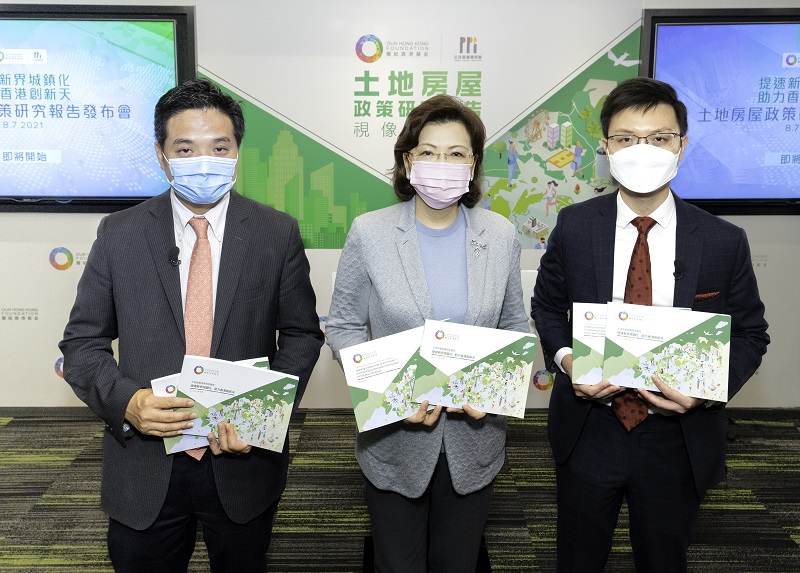
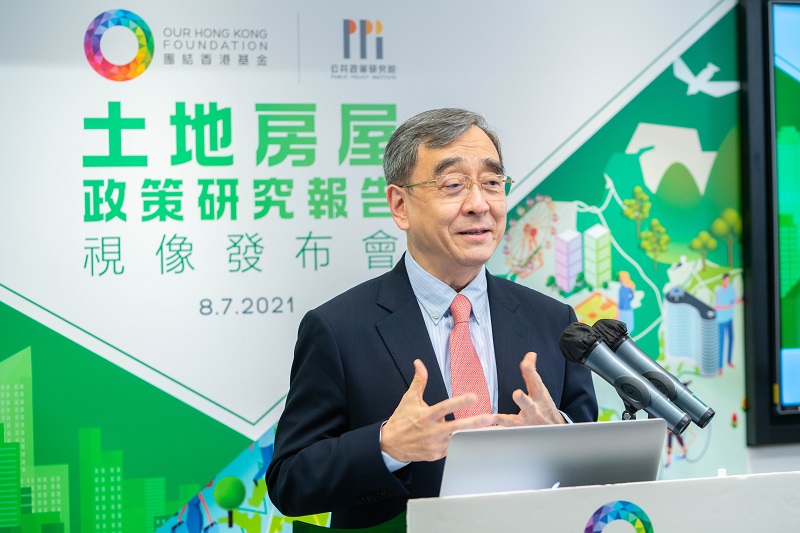
.jpg)

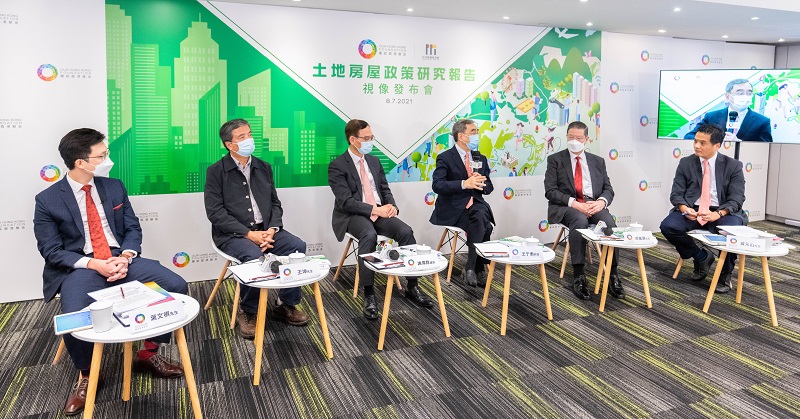
Annex
